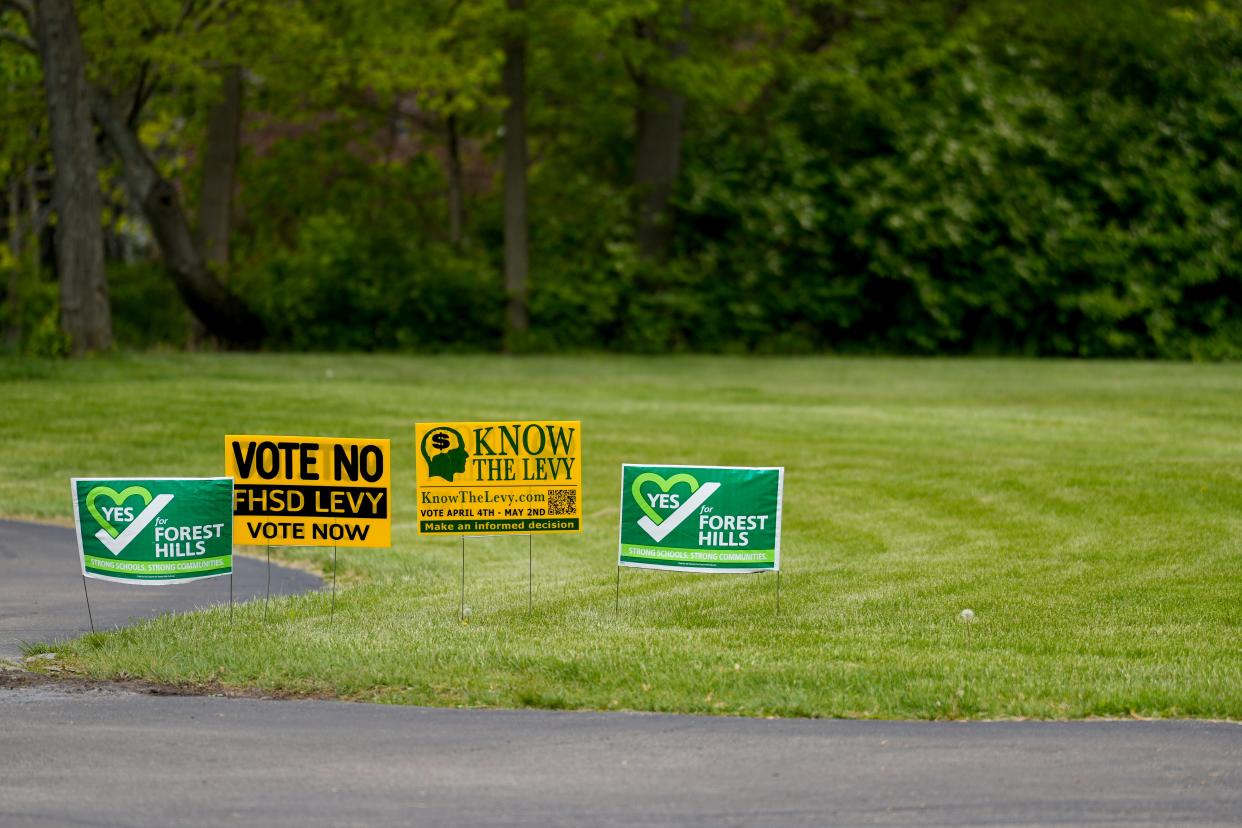Tired of seeing school levies on tax bill? Send different leaders to Statehouse | Opinion

The Feb. 2 letter to the editor published at Cincinnati.com from Deborah Ziegler decried the rise of property taxes in this year’s revaluation. That letter placed the blame first on school districts, and urged readers to "vote no, and then laugh" when a school-funding levy next appears on the ballot. The same day, an article by Scott Wartman observed that "often more than half" of property tax bills go to local school districts.
Ziegler and Wartman are wrong to blame school districts for rising property tax bills. While Wartman correctly noted that the Ohio Supreme Court declared the state’s school funding system unconstitutional in 1997, his article left out two important contextual facts about the effect of school levies on property taxes.
One is that school taxes stay flat even when property valuations go up. Many people are surprised to learn this. (I know I was.) But since the passage of Ohio House Bill 920 in 1976, school-district tax-levy revenues remain flat for the entire term of a levy. Districts receive no inflationary increases on local levies and receive no bump when properties are revalued. Unless there is new construction on a parcel, the amount of money a local school levy generates from each property is fixed at the time the levy is placed on the ballot. It never changes. The only way that local school districts can receive more property tax revenue from a given parcel is through the passage of a new local school levy.
By way of example, if someone built a new home in the early 1990s that was valued at $167,700, and it was subject to a 5-mill school levy at the time, that levy would have generated $293.48 for that school district that year. That levy still generates only $293.48 for that school district now in 2024 − even if the house is currently valued at, say, $306,000 for property tax purposes. County-wide property valuations may have gone up 28% to 37% this year, but unless your community passed a new school levy in 2023, you are paying the exact same number of dollars to your local school district as you were last year, when your property likely had a lower valuation.
Cuts to state funding have forced school districts to the ballot
The second contextual fact missing from Wartman’s article is that after adjusting for inflation, over recent decades the Ohio General Assembly has steadily slashed the amount of money the state sends to public schools. In fiscal year 2007, public K-12 schools received approximately $8.3 billion from the state. By fiscal year 2023, that number had fallen to an inflation-adjusted $7.07 billion (and this despite public education’s remarkable return on investment). While the legislature passed the "Fair School Funding Plan" with great fanfare in 2021, it has not been fully funded, and the Senate president hasn’t committed to future funding for it. Meanwhile, leaders in the General Assembly have proposed further reducing overall state revenues by billions of dollars. One can’t help but wonder what that portends for future education spending by the state.
The net effect of HB 920, the General Assembly’s failure to fully fund public education, and the Ohio Supreme Court’s determination that courts have no authority to enforce its 1997 ruling, is that school districts’ inflation-adjusted revenues are significantly lower than they were a generation ago − let alone two generations ago, when the funding system was declared unconstitutional. (A K-12 education lasts 13 years. It has been 27 years since the funding system was declared unconstitutional. Two entire generations of Ohio’s schoolchildren − and counting − have enrolled in kindergarten and graduated from high school, and the system still has not been fixed.)
Put yourself in the shoes of the school districts: What would you do if your real income had fallen year after year after year? Most people would look carefully at their budgets, cut costs where they could − and seek out additional sources of income. For school districts, the only significant source legally available is a new local levy.
Readers should carefully consider this before they "vote no, and then laugh" for the next school levy.
There is one more thing that readers should carefully consider the next time they step into the voting booth. It has been more than 9,800 days since the public-school funding system was declared unconstitutional in 1997. In that time, Republicans have had majority control of both branches of the General Assembly for all but two years. (Democrats controlled the Ohio House, and only that chamber, in 2009 and 2010.) Republicans have won the governorship in every election but one.
If readers really want to stop seeing school levies on their ballot, they should start sending different people to represent them in Columbus.
Jeff Nye lives in Anderson Township.

This article originally appeared on Cincinnati Enquirer: School tax levy revenues stay flat even when property valuations go up

